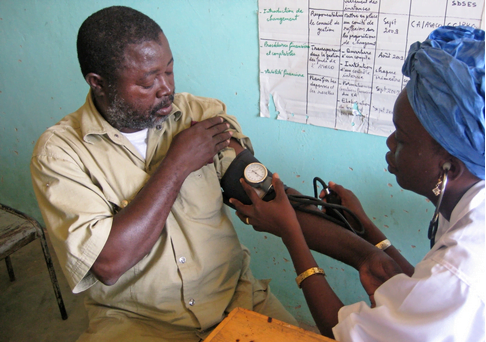Ed note. This op-ed from Gavin Yamey, professor in the Global Health Group at the University of California, San Francisco and leader of the Evidence to Policy Initiative; and Helen Saxenian, senior consultant at the Results for Development Institute, Washington, DC is reprinted with permission from Project Syndicate.
SAN FRANCISCO – The world is at a unique historical inflection point. By making today’s medicines, vaccines, and other health tools universally available – and by stepping up research efforts to develop tomorrow’s health tools – we could close the health gap between wealthy and poor countries within a generation. By 2035, we could achieve a “grand convergence” in global health, reducing preventable maternal and child deaths, including those caused by infectious diseases, to unprecedentedly low levels worldwide. What it will take is a coordinated, future-oriented investment strategy.
A group of 25 global health and economics experts (including us) recently came together to develop such a strategy. In a year-long process, the group identified the tools, systems, and financing that would be needed to achieve global health convergence, and produced Global Health 2035 – an ambitious investment blueprint that would save millions of lives and bolster human welfare, productivity, and economic growth.
With aggressively scaled-up health investments, ten million lives could be saved annually, beginning in 2035. And the economic payoff would be enormous: every dollar invested in low- and middle-income countries (LMICs) to achieve this grand convergence would return $9-20.
Success will require a global commitment to ensuring that everyone can access today’s powerful health technologies and services, like childhood vaccines, treatment for HIV/AIDS and tuberculosis, and prenatal care for pregnant women. It will also require increased funding for the development and delivery of new health tools to redress the conditions that disproportionately kill women and children in LMICs.
To this end, one of the central features of the convergence strategy is family planning. As it stands, more than 220 million women worldwide lack access to modern contraception – an inexcusable situation, given that scaling up family planning would be remarkably simple and inexpensive. And the benefits would be vast.
For starters, improved access to contraception would prevent an estimated one-third of all maternal deaths, and would have a particularly large impact among those facing the highest risk. These include 15-19-year-old women in poor countries, who currently have the least access to contraception, and women who have multiple pregnancies in quick succession, by allowing them to space out their pregnancies. By reducing the rate of unwanted pregnancies, family planning also decreases the number of deaths from unsafe abortions.
This is not only good for mothers. Reducing high-risk pregnancies, curbing unwanted pregnancies, and spacing out births have been shown to decrease newborn and child death rates. The Guttmacher Institute estimates that fully meeting women’s need for contraception would prevent 600,000 newborn deaths and 500,000 child deaths annually.
Moreover, cutting birth rates, which are very high in many LMICs, would help to reduce the strain on these countries’ health-care systems by diminishing the costs of maternal and newborn care and immunization. At the same time, it would facilitate social change that fuels increased productivity and output. According to a study coordinated by the World Health Organization, the economic return from scaling up contraception in 27 countries with very high birth rates, such as Afghanistan and Chad, would exceed 8% of GDP from now until 2035.
So, how much would it cost to ensure universal access to modern medicine and health services? Global Health 2035 puts the total at an additional $70 billion dollars annually, with $1 billion of this increase allocated to family planning alone.
But most of the costs can ultimately be covered by LMICs themselves. In fact, the total bill for global health convergence amounts to less than 1% of the additional GDP that these countries are expected to generate in the next two decades. In other words, public investment of less than 1% of GDP could avert a massive ten million deaths each year.
Innovative partnerships aimed at reducing costs can diminish this burden even more. A group of donor governments, foundations, the United Nations, and private-sector actors recently came together to reduce the price of a long-lasting contraceptive implant (Levonorgestrel) from $18 to $8.50 per unit in more than 50 LMICs.
The international community must play a major role in achieving convergence. Specifically, it must increase investment in research and development for the diseases that affect the poor, like childhood pneumonia and diarrhea, which kill around two million children every year. And direct financial assistance to LMICs – for example, to fund family-planning programs and combat malaria and HIV/AIDS – will be required for years to come.
The opportunity to achieve a grand convergence in global health outcomes is within reach. We need only to convince ourselves to grasp it.
Image credit: Community health workers trained by USAID provide basic health services.USAID/Mali
